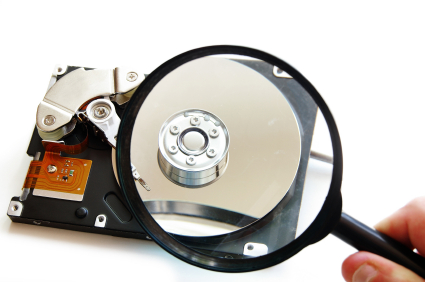How does computer storage work?

A modern computer contains two different types of memory, which are used to store different things. They are RAM (Random Access Memory), and mass storage memory, which is probably the type with which people are more familiar.
What is RAM storage?
RAM is a storage system that’s made from integrated circuits. These are miniaturized electric circuits made from millions of transistors and capacitors, which are organized in pairs to create separate memory cells. The capacitor is the part which determines if what each memory cell contains should be represented in binary code by a one or a zero. The transistor is then a switch that lets the memory chip either read what’s stored in the capacitor, or alter its state.
RAM is described as ‘random’ because anything which is stored in these integrated circuits can be found in the same amount of time, regardless of the capacitor’s physical position. It is usually referred to as a ‘volatile’ form of storage, because anything which is stored on it disappears when the computer is turned off. This is why anything that’s likely to be needed in the future, such as files containing documents, is always safely copied onto mass storage memory.
What RAM is used for is the temporary storage of information which is usually stored elsewhere in a computer system, so that it can be accessed more quickly. When the person using a computer starts running any individual program, that program’s files are automatically transferred from the hard disk over to RAM because it means the processor will be able to communicate with them much more efficiently. When the program is exited, any changed files are written back to the hard disk.
What is mass storage memory?
Mass storage memory refers to the kind of memory devices that are used to store information for long periods of time, including when the computer itself is no longer turned on.
The most common example of this type of storage is the internal hard-drive (pictured above), a device found in practically all modern computers. However, all other long-term storage devices can be described in the same way, including external hard drives, USB memory sticks and all kinds of optical storage disk (DVDs, CDs and floppy disks).
Hard drives use magnetism to store information. Inside one a disk coated in magnetic material, called a platter, rotates at very high speed. Information is stored on it through the magnetization orientating different sections of the metal in two different directions, with one direction representing 1 in binary, and the other representing 0. It is altered by the actions of a magnetic arm that passes above it called a ‘read and write head’, which changes the information by using its magnets to adjust the magnetic field, and thus orientating the sections of the metal differently.
This is extremely delicate, with the ‘read and write head’ passing over the platter just tens of nanometers above it (a nanometer is a million times smaller than a millimeter). How quickly information can be accessed is determined partly by which part of the platter it is stored on, and how far this has to travel before it reaches the read and write head.
Information is encoded onto the storage device using a file system. This is just a way of organising all the different files on a given storage device, and amongst other things gives a measure of the capacity of binary information that the storage device is able to hold. This is measured on a scale that increases in powers of 1024; therefore, a storage device that holds 1024 kilobytes has a capacity of 1 megabyte, whilst a storage device with a capacity of 1024 megabytes holds 1 gigabyte.
The capacity of mass memory storage devices has increased exponentially in the last 20 years. Back in the 1980s it was typical for a home computer to have a storage capacity measured in the tens of megabytes. By the 1990s, this had increased into the gigabytes (a thousand megabytes), and now external hard drives with a terabyte (a thousand gigabytes, or a thousand thousand megabytes) are commercially available. Just as capacity has increased, price has fallen enormously, owing to improvements in the manufacturing process for mass storage devices.
Leave a Reply
Subscribe to This Blog
Get new blog posts sent to you by subscribing to RSS updates or to email updates.






